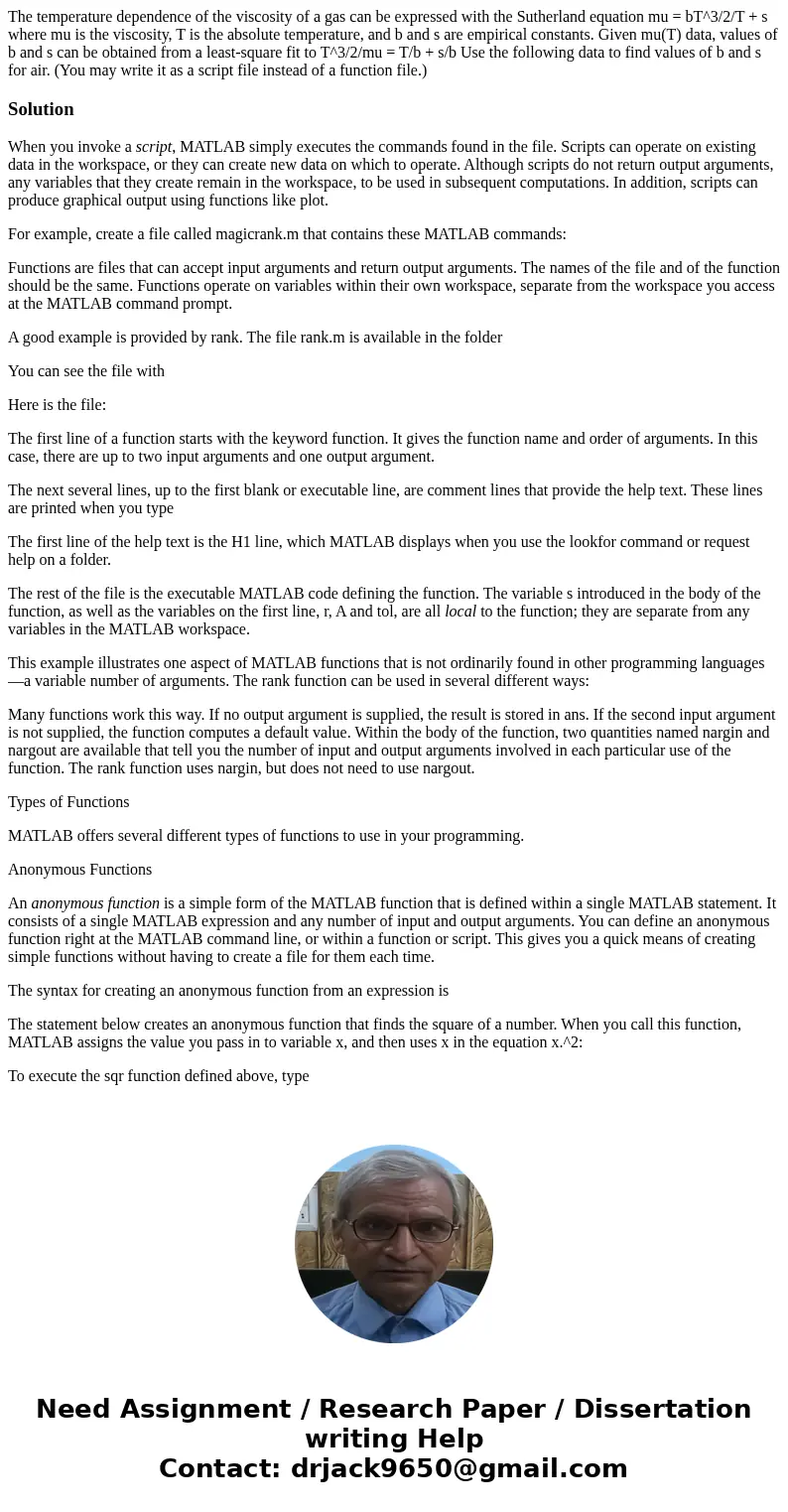The temperature dependence of the viscosity of a gas can be
Solution
When you invoke a script, MATLAB simply executes the commands found in the file. Scripts can operate on existing data in the workspace, or they can create new data on which to operate. Although scripts do not return output arguments, any variables that they create remain in the workspace, to be used in subsequent computations. In addition, scripts can produce graphical output using functions like plot.
For example, create a file called magicrank.m that contains these MATLAB commands:
Functions are files that can accept input arguments and return output arguments. The names of the file and of the function should be the same. Functions operate on variables within their own workspace, separate from the workspace you access at the MATLAB command prompt.
A good example is provided by rank. The file rank.m is available in the folder
You can see the file with
Here is the file:
The first line of a function starts with the keyword function. It gives the function name and order of arguments. In this case, there are up to two input arguments and one output argument.
The next several lines, up to the first blank or executable line, are comment lines that provide the help text. These lines are printed when you type
The first line of the help text is the H1 line, which MATLAB displays when you use the lookfor command or request help on a folder.
The rest of the file is the executable MATLAB code defining the function. The variable s introduced in the body of the function, as well as the variables on the first line, r, A and tol, are all local to the function; they are separate from any variables in the MATLAB workspace.
This example illustrates one aspect of MATLAB functions that is not ordinarily found in other programming languages—a variable number of arguments. The rank function can be used in several different ways:
Many functions work this way. If no output argument is supplied, the result is stored in ans. If the second input argument is not supplied, the function computes a default value. Within the body of the function, two quantities named nargin and nargout are available that tell you the number of input and output arguments involved in each particular use of the function. The rank function uses nargin, but does not need to use nargout.
Types of Functions
MATLAB offers several different types of functions to use in your programming.
Anonymous Functions
An anonymous function is a simple form of the MATLAB function that is defined within a single MATLAB statement. It consists of a single MATLAB expression and any number of input and output arguments. You can define an anonymous function right at the MATLAB command line, or within a function or script. This gives you a quick means of creating simple functions without having to create a file for them each time.
The syntax for creating an anonymous function from an expression is
The statement below creates an anonymous function that finds the square of a number. When you call this function, MATLAB assigns the value you pass in to variable x, and then uses x in the equation x.^2:
To execute the sqr function defined above, type

 Homework Sourse
Homework Sourse